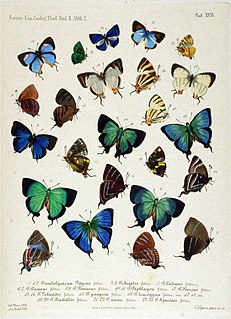
The Eumaeini are a tribe of gossamer-winged butterflies. They are typically placed in the subfamily Theclinae, but sometimes considered a separate subfamily Eumaeinae. Over 1,000 species are found in the Neotropical realm

Atlides is a genus of gossamer-winged butterflies. Among these, it belongs belong to the tribe Eumaeini of the subfamily Theclinae. These small butterflies are widespread in the Americas, occurring almost anywhere between the southern United States and Argentina.

Balintus is a gossamer-winged butterfly genus of the tribe Eumaeini in the subfamily Theclinae. Its only known species, Balintus tityrus, is found in the Neotropical realm, where it is endemic to Colombia.
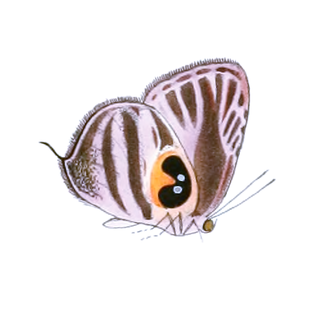
Enos is a genus of gossamer-winged butterflies. Among these, it belongs belong to the tribe Eumaeini of the subfamily Theclinae. These small butterflies occur essentially all over the Neotropics.

Megathecla is a gossamer-winged butterfly genus of tribe Eumaeini in the subfamily Theclinae. These butterflies are found in the Neotropical realm. The distinctness of this genus was only recognized after the year 2000, even though the type species M. gigantea has been scientifically known since the late 19th century.

Pseudolycaena is a Neotropical genus of butterfly in the family Lycaenidae.
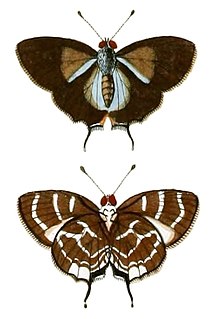
Thereus is a genus of gossamer-winged butterflies. Among these, it belongs belong to the tribe Eumaeini of the subfamily Theclinae. These small butterflies occur essentially all over the Neotropics.
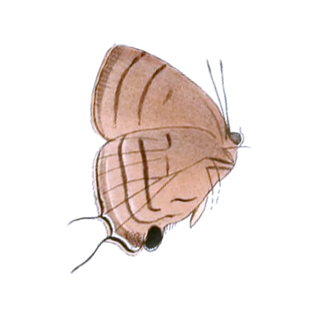
Theritas is a genus of gossamer-winged butterflies found in the Neotropics. Among the tribe Eumaeini of its subfamily Theclinae, it is usually placed in the group around the genus Atlides. In particular, it seems most closely related to Arcas.
Porthecla forasteira is a butterfly in the family Lycaenidae. It is found in Peru, Bolivia and French Guiana. The habitat consists of lowland areas.
Porthecla annette is a butterfly in the family Lycaenidae. It is found in Panama and central Colombia at altitudes under 1,000 meters.
Porthecla ravus is a butterfly in the family Lycaenidae. It is found in the Amazon basin and southern Brazil.
Porthecla barba is a butterfly in the family Lycaenidae. It is found in northern and western Colombia and western Ecuador at altitudes between 1,375 and 2,300 meters.
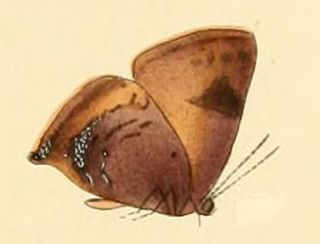
Porthecla dinus is a butterfly in the family Lycaenidae. It is found in fragmented montane habitats at altitudes between 600 and 1,800 meters in south-eastern Brazil.
Porthecla prietoi is a butterfly in the family Lycaenidae. It is found in western Colombia and western Ecuador at altitudes between 1,000 and 2,200 meters.
Porthecla willmotti is a butterfly in the family Lycaenidae. It is found in eastern Ecuador and eastern Peru at altitudes between 1,500 and 2,200 meters.
Porthecla porthura is a butterfly in the family Lycaenidae. It is found from Honduras to western Ecuador in forests up to altitudes of 1,150 meters.
Porthecla gemma is a butterfly in the family Lycaenidae. It is found in the Amazon basin and the Guianas at altitudes between 100 and 1,000 meters.
Porthecla johanna is a butterfly in the family Lycaenidae. It is found in Peru and Ecuador in wet lowland forests at altitudes between 400 and 600 meters.
Porthecla peruensis is a butterfly in the family Lycaenidae. It is found in northern Peru, on the east side of the Andes. It appears to be a montane species, since it has only been found at altitudes above 1,500 meters.
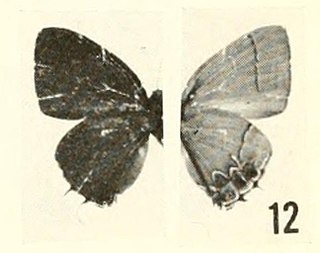
Calycopis pisis, the pisis groundstreak, is a butterfly found in several countries in Latin America.










